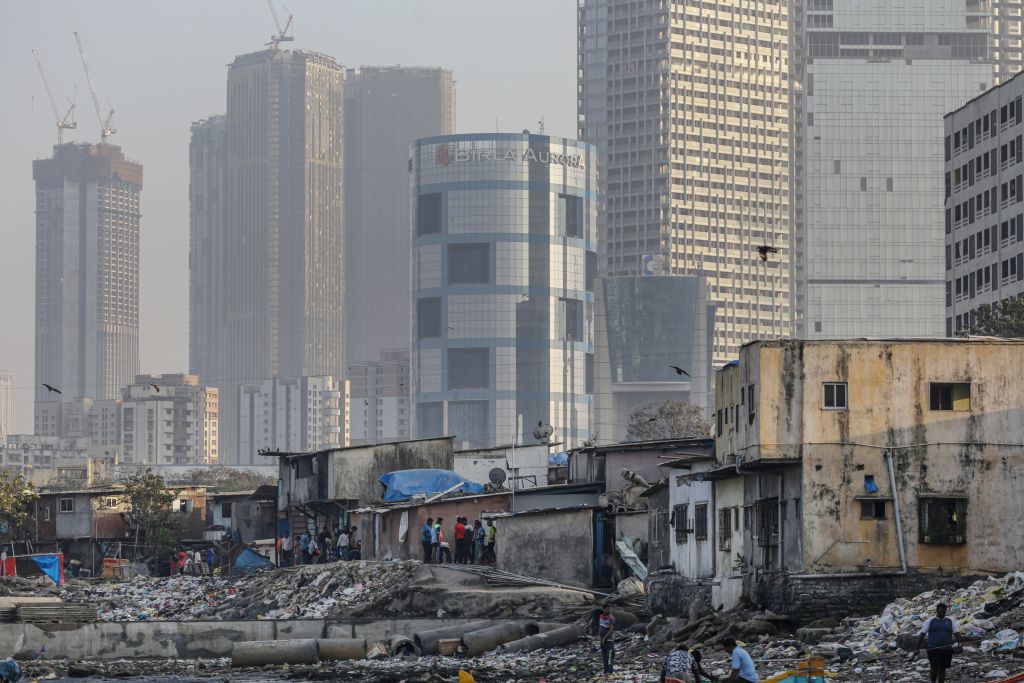A new study from the World Inequality Lab finds that the present-day golden era of Indian billionaires has produced soaring income inequality in India—now among the highest in the world and starker than in the U.S., Brazil, and South Africa. The gap between India’s rich and poor is now so wide that by some measures, the distribution of income in India was more equitable under British colonial rule than it is now, according to the group of economists who co-authored the study, including the renowned French economist Thomas Piketty.
The current total number of billionaires in India is peaking at 271, with 94 new billionaires added in 2023 alone, according to Hurun Research Institute’s 2024 global rich list published Tuesday. That’s more new billionaires than in any country other than the U.S., with a collective wealth that amounts to nearly $1 trillion—or 7% of the world’s total wealth. A handful of Indian tycoons, such as Mukesh Ambani, Gautam Adani, and Sajjan Jindal, are now mingling in the same circles as Jeff Bezos and Elon Musk, some of the world’s richest people.
“The Billionaire Raj headed by India’s modern bourgeoisie is now more unequal than the British Raj headed by the colonialist forces,” the authors write.
The observation is particularly stark when considering India is now hailed as an 8% GDP growth economy, according to Barclays Research, with some projecting that India is poised to surpass Japan and Germany to become the world’s third-largest economy by 2027.
But the authors of the World Inequality Lab study reached this conclusion by tracking how much of India’s total income, as well as wealth, is held by the country’s top 1%. While income refers to the sum of earnings, interest on savings, investments and other sources, wealth (or net worth) is the total value of assets owned by an individual or group. The authors combined national income accounts, wealth aggregates, tax tabulations, rich lists, and surveys on income, consumption, and wealth to present the study’s findings.
Read More: Why India’s Next Election Will Last 44 Days
For income, the economists looked at annual tax tabulations released by both the British and Indian governments since 1922. They found that even during the highest recorded period of inequality in India, which occurred during the inter-war colonial period from the 1930s until India’s independence in 1947, the top 1% held around 20 to 21% of the country’s national income. Today, the 1% holds 22.6% of the country’s income.
Similarly, the economists also tracked the dynamics of wealth inequality, beginning in 1961, when the Indian government first began conducting large-scale household surveys on wealth, debt and assets. By combining this research with information from the Forbes Billionaire Index, the authors found that India’s top 1% had access to a staggering 40.1% of national wealth.
Because the number of Indian billionaires shot up from one in 1991 to 162 in 2022, the total net wealth of these individuals over this period as a share of India’s net national income “boomed from under 1% in 1991 to a whopping 25% in 2022,” the authors said.
The report also found that the rise in inequality had been particularly pronounced since the ruling Bharatiya Janata Party first came to power in 2014. Over the last decade, major political and economic reforms have led to “an authoritarian government with centralization of decision-making power, coupled with a growing nexus between big business and government,” the report states. This, they say, was likely to “facilitate disproportionate influence” on society and government.
They added that average Indians, and not just the Indian elite, could still stand to gain from globalization if the government made more public investments in health, education, and nutrition. Moreover, a “super tax” of 2% on the net wealth of the 167 wealthiest Indian families in 2022-23 would result in 0.5% of national income in revenues, and “create valuable fiscal space to facilitate such investments,” the authors argued.
Until the government makes such investments, however, the authors caution against the possibility of India’s slide toward plutocracy. The country was once a role model among post-colonial nations for upholding the integrity of various key institutions, the authors say, and they point out that even the standard of economic data in India to study inequality has declined recently.
“If only for this reason, income and wealth inequality in India must be closely tracked and challenged,” the authors say.
